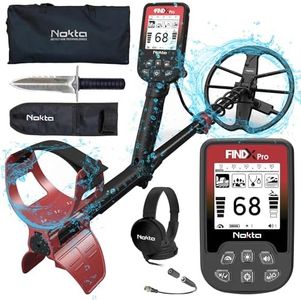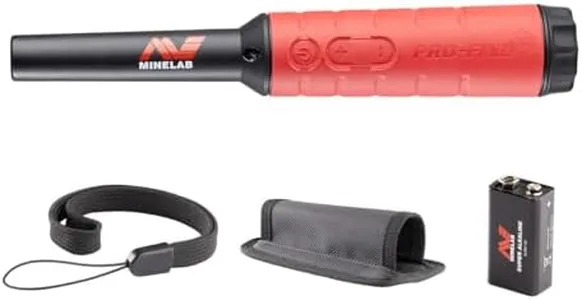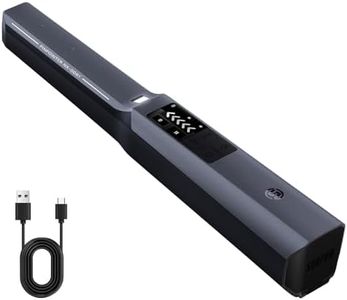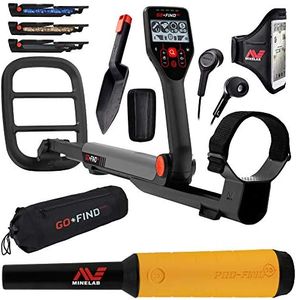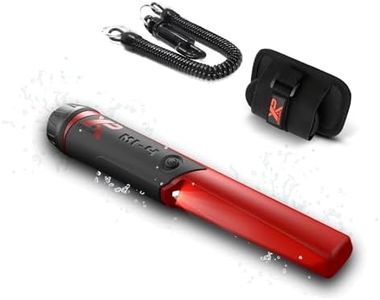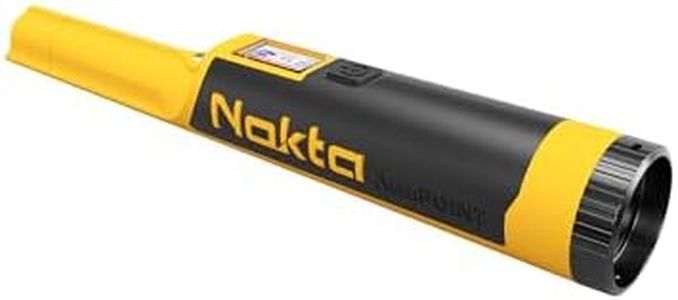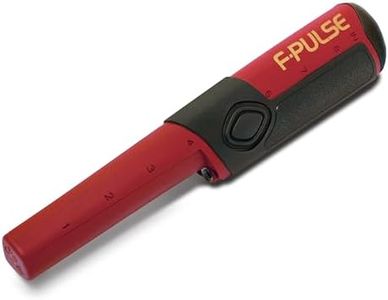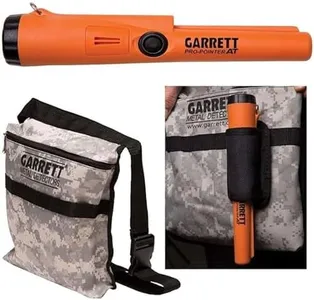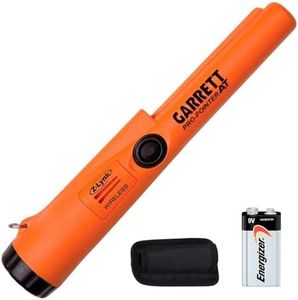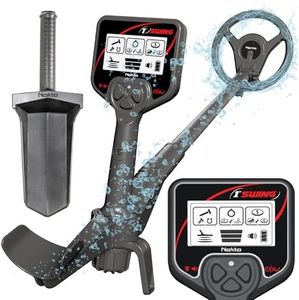We Use CookiesWe use cookies to enhance the security, performance,
functionality and for analytical and promotional activities. By continuing to browse this site you
are agreeing to our privacy policy
10 Best Metal Detector Pinpointer
From leading brands and best sellers available on the web.Buying Guide for the Best Metal Detector Pinpointer
Choosing the right metal detector pinpointer can make searching for buried objects much more efficient and enjoyable. Pinpointers are handheld devices designed to help you precisely locate the target once your metal detector has found the general area. To find the best fit for you, it’s important to understand the specifications and features that differentiate pinpointers and to think about how and where you plan to use your tool.Detection DepthDetection depth is how deep the pinpointer can sense metal objects beneath the surface. This is important because a greater detection depth can help you find objects buried a little further down, but too much depth can make it hard to pinpoint the exact location. Lower-end models might detect only an inch or less, which is good if you just want to quickly locate items very close to the surface. Medium-range pinpointers sense items two to three inches down and work well for most coin and relic hunting. High-end models can go deeper, sometimes up to four inches or more. Think about what you search for and how precise you need to be; if you are mostly finding small or shallow items, a shallower depth might be less frustrating.
Sensitivity LevelsSensitivity in a pinpointer is the ability to detect small or deeply buried objects. Some pinpointers have adjustable sensitivity, letting you tweak how responsive they are. Lower sensitivity might help avoid false signals in trashy or mineralized soil, while higher sensitivity is better for detecting tiny targets, like small jewelry or thin coins. Beginners often benefit from starting at medium sensitivity, while more advanced users can experiment to match their detecting environment and challenges.
Signal Types (Audio/Vibration/LED)Pinpointers alert you to metal objects using beeps (audio), vibrations, or LED lights. Some offer one type, while others use combinations. Audio is useful in quiet areas, vibration helps when wearing headphones or in noisy places, and LED lights can be invaluable in low-light conditions or when searching inside dark holes. Consider where you most often search—if it’s noisy, vibration might be more helpful; for night or indoor hunting, look for pinpointers with an LED indicator.
Water ResistanceWater resistance or waterproofing tells you if the pinpointer can be used in wet environments or even submerged. Some are only splashproof, safe for dewy grass or light rain, while others can be fully submerged several feet underwater, ideal for riverbanks or beach hunts. Be honest about your hunting locations—if you often hunt near water or in wet conditions, waterproofing is very important; otherwise, splash resistance might be enough.
Size and WeightThe dimensions and weight of a pinpointer affect comfort, portability, and how easily you can use it, especially for longer sessions. Compact, lightweight models are easy to carry and less tiring, which is important for casual or younger users. Larger models may offer more grip or durability but can be heavier. If you need one to fit in a pocket or tool pouch, prioritize a slimmer, lighter pinpointer.
Battery Type and LifePinpointers run on batteries—either disposable (like 9V or AA) or rechargeable. Longer battery life means less hassle in the field. Rechargeable types are convenient for frequent use, while disposables can be swapped quickly if one runs out. Think about how long you hunt and how easy it is for you to recharge or replace batteries while outdoors. Choose what matches your outing habits best.
Durability and Build QualityThe pinpointer’s build determines how well it stands up to drops, rough use, and outdoor weather. More rugged models might have reinforced tips and stronger cases, helpful if you often search in rocky or challenging places. If you know you’re tough on equipment or hunt in wild terrain, prioritize tougher builds; for garden or park hunts, a basic well-made device should suffice.
